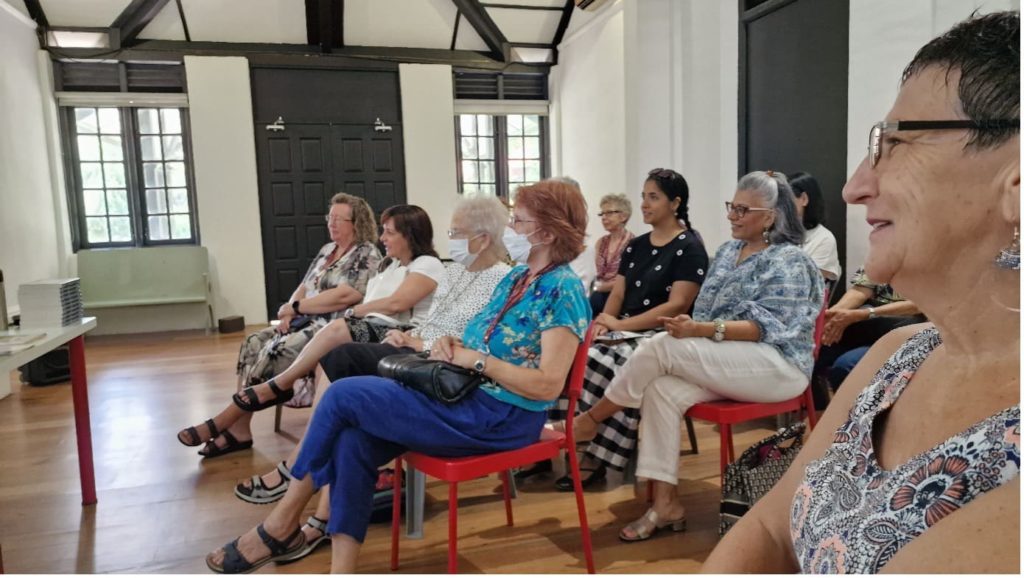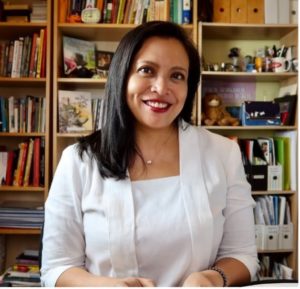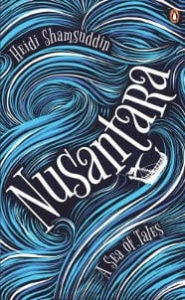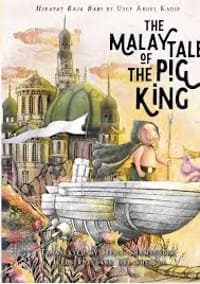
Since the beginning of time humans have used stories to explain things they don’t understand, for example the moon, heaven, natural disasters, etc. They combine impossible actions of mythical creatures with everyday life activities, e.g. Elves making shoes for a shoemaker, Jack climbing a beanstalk to heaven, etc.
But can we consider these fairy tales folklore? And what is folklore really?
Those were the opening questions at the “Nusantara, A Sea of Tales” presentation on May 17th. In the hall of the cultural centre Badan Warisan Malaysia, Heidi Shamsuddin put these questions forward to a group of more than 20 MCG members.


To answer the opening questions, Heidi defined folklore as follows: ‘informally transmitted material culture’. And culture as ‘something you learn and pass on’.
If we look at fairy tales, they are mostly informally transmitted, shared; you tell your child the story of Cinderella. You tell the story in our own words; the story is altered. Finally your child tells the story at school; it spreads.
These are the three components to consider a story to be folklore. So we can conclude that fairy tales are folklore.
The main genres of folklore are:
- verbal (things people say),
- customary (things people do/believe) and
- material (things people make)
Fairy tales are part of the verbal folklore.
Another example Heidi gave was for material folklore. She and her son were preparing in the traditional way, outside on an open fire, the rendang recipe she learned from her mother. There again you see the three components: the informal sharing, the altering of the recipe (more or less salt, sugar etc) and the spreading; from her mother to her and now to her son.
By writing these tales and stories down, Heidi wants to preserve the Southeast Asian culture. It is important for the people in this region to know their own tales and not only the western fairy tales. Hence her latest project to collect and adapt tales, myths, fables, legends, epics etc from the Nusantara region with the aim to spread and publicise them.
Heidi finished her talk by saying: “folklore is a living tradition curated by and for the people. We are all carriers of folklore”.
We were then treated to some exciting Malay fairy tales. The author also demonstrated the form of the storytelling kamishibai (Japanese paper theatre) in the story “How Mount Kinabalu was created”.



The session ended with questions and observations from our members. There were some copies of Heidi’s latest book, which our members could purchase and get signed on the spot.
All and all a very informative and noteworthy event. It was a great way to learn more about the folklore of Southeast Asia through fairy tales.
You can explore Heidi’s work on YouTube.
Check out her award winning short animated film Batik Girl https://youtu.be/hXxqy-iT9kQ
Also her TEDx talk on why we still need our fairy tales.
And her YouTube channel
www.heidishamsuddin.com
Note: Nusantara is the Indonesian name of Maritime Southeast Asia (or parts of it). It is an Old Javanese term that literally means “outer islands”. In Indonesia, it is generally taken to mean the Indonesian Archipelago. Outside of Indonesia, the term has been adopted to refer the Malay Archipelago. (Wikipedia)
Reviewer: Astrid Belliot
